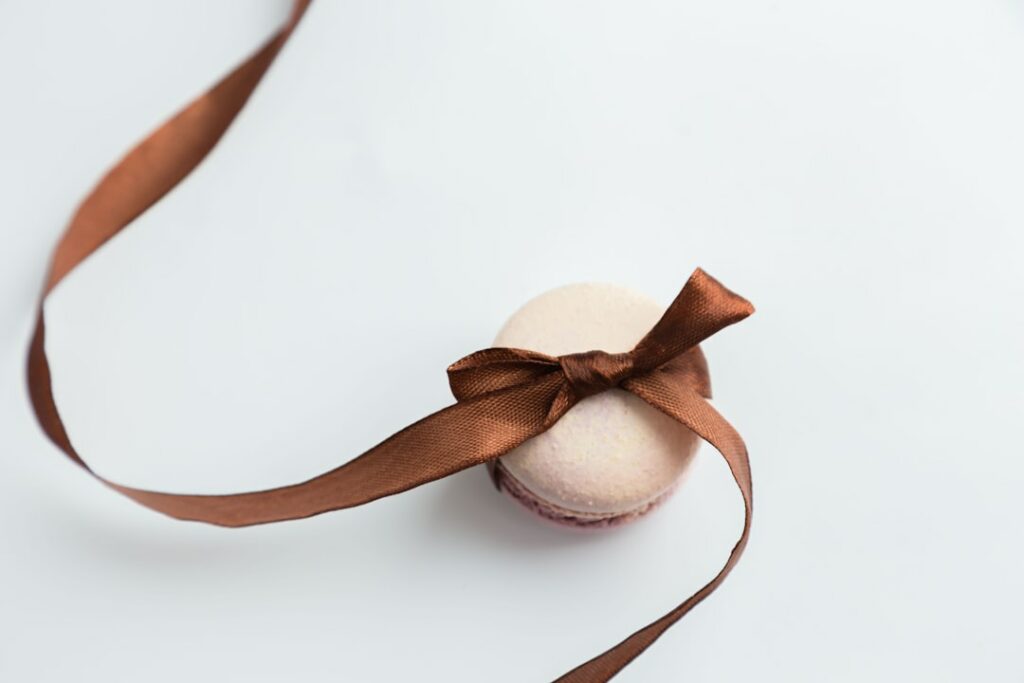Handfasting, a term that may evoke images of romantic ceremonies and ancient traditions, has roots that stretch back to the early Celtic cultures of the British Isles. This practice, which involves the binding of hands as a symbol of union, was often used as a form of betrothal or marriage. In its earliest forms, handfasting was a way for couples to publicly declare their commitment to one another, often in the presence of family and friends.
The act of tying the hands together with a ribbon or cord signified not only the joining of two individuals but also the intertwining of their lives and destinies. As you delve deeper into the history of handfasting, you will discover that it was not merely a ceremonial act but also held significant legal implications in some cultures.
In medieval Scotland, for instance, handfasting was recognised as a legitimate form of marriage, allowing couples to live together and establish families without the need for a formal church ceremony.
This practice persisted for centuries, evolving over time and adapting to the changing social and religious landscapes. Today, handfasting is experiencing a resurgence as couples seek to incorporate meaningful rituals into their weddings, drawing on its rich history while infusing it with personal significance.
Summary
- Handfasting has its roots in ancient Celtic tradition, where couples would bind their hands together as a symbol of their commitment.
- The handfasting ribbon symbolises the joining of two individuals in marriage, with each colour representing different aspects of their union.
- When choosing a ribbon for your handfasting ceremony, consider the colours and materials that hold personal significance for you and your partner.
- Incorporating the handfasting ceremony into your wedding can be done in a variety of ways, such as during the vows or as a standalone ritual.
- The officiant plays a crucial role in the handfasting ceremony, guiding the couple through the ritual and explaining its significance to the guests.
Symbolism of the Handfasting Ribbon
The ribbon used in handfasting ceremonies is more than just a decorative element; it is steeped in symbolism and meaning. Traditionally, the ribbon represents the bond between partners, signifying their commitment to one another. The act of binding hands together serves as a powerful reminder of the promises made during the ceremony, encapsulating the essence of love, unity, and partnership.
As you consider incorporating handfasting into your wedding, it is essential to understand the depth of this symbolism and how it can enhance your experience. Moreover, the colours and materials chosen for the handfasting ribbon can carry additional significance. For instance, a red ribbon may symbolise passion and love, while a white ribbon could represent purity and new beginnings.
By selecting colours that resonate with your personal values or relationship history, you can create a more profound connection to the ritual. The act of tying the ribbon around your hands becomes a visual representation of your vows, making it an integral part of your wedding ceremony that you will cherish for years to come.
Choosing the Right Ribbon for Your Ceremony

When it comes to selecting the perfect ribbon for your handfasting ceremony, there are several factors to consider. First and foremost, think about the colours that resonate with you and your partner. You may wish to choose colours that reflect your personalities or those that hold special meaning in your relationship.
For example, if you both share a love for nature, earthy tones like green or brown could be fitting choices. Alternatively, if you want to evoke a sense of joy and celebration, vibrant hues like yellow or orange might be more appropriate. In addition to colour, consider the material of the ribbon itself.
Traditional handfasting ribbons were often made from natural fibres such as cotton or silk, which can add an organic touch to your ceremony. However, modern couples may opt for more contemporary materials like satin or even leather, depending on their personal style and wedding theme. Ultimately, the right ribbon should resonate with both you and your partner, serving as a beautiful representation of your unique bond as you embark on this new chapter together.
How to Incorporate the Handfasting Ceremony into Your Wedding
Incorporating a handfasting ceremony into your wedding can be a seamless process that adds depth and meaning to your special day. One approach is to weave it into your existing ceremony structure. For instance, you might choose to perform the handfasting ritual after exchanging vows but before sealing your promises with a kiss.
This placement allows for a natural flow within the ceremony while emphasising the significance of your commitment.
Another option is to create a standalone handfasting ceremony that highlights this ancient tradition.You could invite guests to gather around as you and your partner take centre stage, allowing them to witness this intimate moment.
This approach not only showcases the beauty of handfasting but also invites your loved ones to share in the experience, reinforcing the communal aspect of marriage. Regardless of how you choose to incorporate it, ensure that the handfasting ritual reflects your personalities and values as a couple.
The Role of the Officiant in the Handfasting Ceremony
The officiant plays a crucial role in any wedding ceremony, and this is especially true for handfasting rituals. As you plan your ceremony, consider how your officiant can help facilitate this unique aspect of your wedding. They should be well-versed in the significance of handfasting and able to articulate its meaning to your guests.
This not only educates those unfamiliar with the tradition but also adds an extra layer of depth to the ceremony. Additionally, your officiant can guide you through the handfasting process itself. They may offer suggestions on how to phrase your vows or provide insights into how best to tie the ribbons around your hands.
By collaborating with your officiant, you can ensure that this part of your ceremony flows smoothly and resonates with both you and your guests. Their presence can help create an atmosphere of reverence and joy as you embark on this new journey together.
Personalising Your Handfasting Ritual

One of the most beautiful aspects of handfasting is its inherent flexibility, allowing you to personalise the ritual in ways that reflect your unique relationship. You might choose to include specific vows or promises that hold special meaning for both you and your partner. These personalised vows can serve as a powerful reminder of your commitment and love for one another as you bind your hands together.
In addition to custom vows, consider incorporating elements that represent significant milestones in your relationship. For example, you could include tokens or symbols from memorable moments you’ve shared—perhaps a small charm representing your first holiday together or a flower from a meaningful location. By weaving these personal touches into your handfasting ceremony, you create a rich tapestry of memories that will forever be associated with this sacred moment.
Honouring Cultural and Religious Traditions in the Handfasting Ceremony
As you plan your handfasting ceremony, it is essential to consider how it aligns with any cultural or religious traditions that are important to you and your partner. Many couples choose to blend elements from their respective backgrounds into their ceremonies, creating a unique fusion that honours both heritages. This could involve incorporating specific prayers or blessings alongside the handfasting ritual or using traditional attire that reflects your cultural roots.
Moreover, if either of you has strong religious beliefs, consider how these can be integrated into the handfasting ceremony without overshadowing its essence. For instance, you might choose to have a religious officiant who can bless the binding of hands while still acknowledging the significance of handfasting as a symbol of unity. By honouring these traditions while embracing the beauty of handfasting, you create a ceremony that is not only meaningful but also deeply personal.
The Modern Relevance of the Handfasting Ribbon Ceremony
In today’s world, where traditional wedding customs are often reimagined or set aside altogether, handfasting stands out as a timeless ritual that resonates with many couples seeking authenticity in their ceremonies. The modern relevance of handfasting lies in its ability to encapsulate love’s essence—commitment, partnership, and unity—while allowing for personal expression and creativity. As couples increasingly seek ways to make their weddings unique and reflective of their values, handfasting offers an opportunity to honour ancient traditions while crafting new memories.
Furthermore, as society becomes more inclusive and diverse, handfasting serves as an adaptable ritual that can accommodate various relationship dynamics and identities. Whether you’re planning a same-sex wedding or seeking a non-religious alternative to traditional ceremonies, handfasting provides a meaningful way to celebrate love in all its forms. By embracing this ancient practice in contemporary settings, you not only honour its rich history but also contribute to its evolution as a cherished tradition for future generations.
In conclusion, handfasting is more than just an enchanting ritual; it is a celebration of love that transcends time and culture. By understanding its history and symbolism, choosing meaningful elements for your ceremony, and personalising it to reflect your unique relationship, you can create an unforgettable experience that resonates deeply with both you and your guests. As you embark on this journey together, may your handfasting ceremony serve as a beautiful testament to your love and commitment for years to come.
If you are exploring the concept of handfasting and its significance in ceremonies, you might find it enriching to understand how personal values and beliefs influence various life rituals. A related article that delves into living out one’s values through significant life events, including ceremonies, can be found on the Humanist Fitz website. I recommend reading Living Humanist Values: A Celebrant’s Perspective to gain deeper insights into how personal beliefs shape the rituals that mark our lives, potentially including those like handfasting.
How Can a Handfasting Ribbon Ceremony Be Incorporated into a Humanist Wedding?
A handfasting ribbon ceremony can beautifully complement humanist weddings celebrating love and individuality by symbolizing the union of two souls in a deeply personal way. Couples can choose ribbons that reflect their unique bond, creating a meaningful moment that aligns perfectly with the humanist focus on personal values and heartfelt connections.

